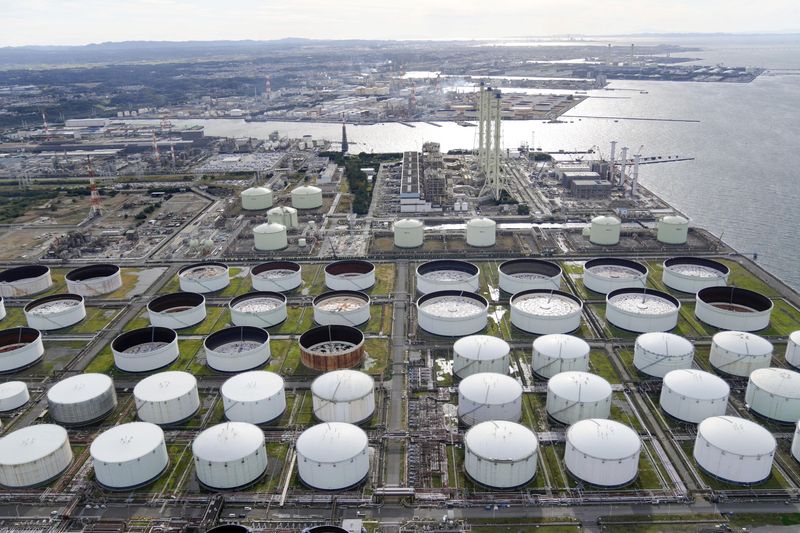By Stephanie Kelly
NEW YORK (Reuters) -Oil prices fell over 2% on Thursday after unsubstantiated reports of a ceasefire between Israel and Hamas and after a power outage forced a large U.S. refinery to shut.
A Qatari official told Reuters there was no ceasefire yet, but repeated that Hamas had received a ceasefire proposal made earlier this week positively.
Brent crude futures dropped $1.85, or 2.5%, to settle at $78.70 a barrel, while U.S. West Texas Intermediate crude futures fell $2.03, or 2.7%, to $73.82.
Tensions in the Middle East have recently boosted oil prices. Attacks by Yemen-based Houthi forces on vessels in the Red Sea have persisted, driving up costs and disrupting global oil trading.
The Houthi group also said it would keep up attacks on U.S. and British warships in what it called acts of self-defense.
Meanwhile, BP (NYSE:BP) Plc on Thursday said it was in the process of shutting down its 435,000 barrel-per-day (bpd) Whiting, Indiana, refinery after a power outage. The City of Whiting said the power outage prompted visible flaring as products were burned off.
Earlier, two OPEC+ sources said the group would decide in March whether or not to extend voluntary oil production cuts in place for the first quarter, after a ministerial panel meeting made no changes to the group's output policy.
OPEC+ currently has 2.2 million barrels per day (bpd) of voluntary oil production cuts, announced in November.
Oil prices had climbed in earlier trading after Federal Reserve Chair Jerome Powell on Wednesday said interest rates had peaked and would move lower in coming months, with inflation continuing to fall and an expectation of sustained economic growth.
Lower interest rates and economic growth help oil demand.
Powell declined to promise that rate cuts would come as early as the Fed's March 19-20 meeting, as investors had hoped.

The U.S. also released on Thursday data showing worker productivity grew faster than expected in the fourth quarter, keeping unit labor costs contained and giving the Fed another boost in the fight against inflation.
U.S. manufacturing stabilized in January amid a rebound in new orders, but inflation at the factory gate picked up.